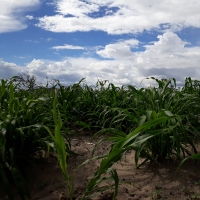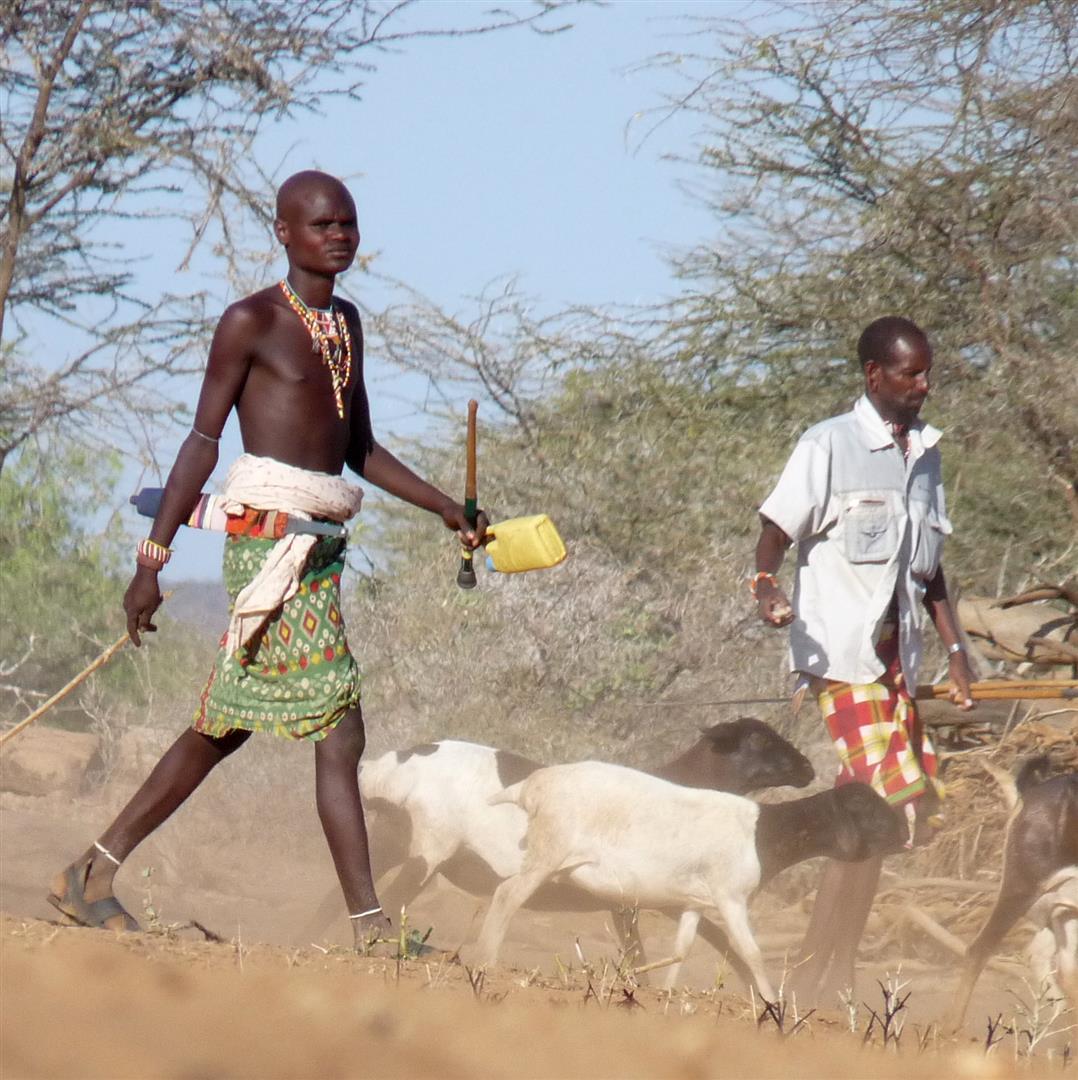Celebrating 5 new ASSAR journal articles

During the month of June, the ASSAR research team celebrated the publication of five new journal articles based on their findings in Southern Africa, West Africa, East Africa and India. The topics range from risks and responses to climate change in rural India; and, a systematic literature review of institutional perspectives on climate-smart agriculture; to smallholder crop farmers' adaptation responses in North-Central Namibia; the severe impacts of 1.5 and 2.0 °C global warming on Botswana; and, the environmental and societal dynamics that surround drought impacts in East Africa. Below is a list of the articles, their abstracts and links to the full journal articles:

Risks and responses in rural India: Implications for local climate change adaptation action
Authors: Chandni Singh, Andaleeb Rahman, Arjun Srinivas, Amir Bazaz
Publication: Climate Risk Management, 21 June 2018
Abstract: People in drylands face multiple climatic and non-climatic risks and subsequently engage in various response strategies to manage these risks. Research on risk management has typically focussed on a static, location-specific understanding of risk and response. However, empirical evidence suggests that risks and vulnerability vary across space and time. Increasingly, responses traverse multiple locations e.g. people move across rural and urban areas, women move beyond the household/community to earn additional incomes. To highlight this dynamic reality of risks and responses, we study livelihood transitions in South India. We unpack risk and response portfolios across scales – household, community, and sub-national (district) levels – and classify them as coping, adaptive and maladaptive. Our findings emphasise that present responses do not necessarily qualify as climate change adaptation strategies. While certain strategies do improve household wellbeing in the short run, there is relatively lower evidence to suggest an increase in adaptive capacity to deal with climatic risks in the future. These findings point to critical gaps in understanding current risk management and how it can contribute to local adaptation policymaking and implementation. Read the journal article.

Livelihoods on the edge without a safety net: The case of smallholder crop farming in North-Central Namibia
Authors: Dian Spear, Angela Chappel
Publication: Land, 21 June 2018
Abstract: Semi-arid Namibia is marginal for agricultural production. Low soil fertility combined with low and variable rainfall restrict the livelihoods of smallholder farmers who often struggle to produce enough food. Although historically, communities have adopted a number of coping mechanisms, climate change threatens to further reduce agricultural production. There are many additional options available to smallholder farmers to adapt to climate change, but they are not necessarily adopting these measures despite having noticed increasing temperatures and declining rainfall. Semi-structured interviews were conducted in three villages in Onesi constituency to examine what agricultural practices smallholder crop farmers use, perception of changes in their yields, their perspective on future yields and whether they are planning on changing their agricultural practices. The results suggest that to sustain the livelihoods of rural communities in north-central Namibia, support is needed from local and regional authorities, as well as traditional and religious leaders to assist with enhancing access to information, enabling information sharing on adaptation options, and increasing awareness on climate change, its impacts and what can be done about it. In addition to this, implementation of the adaptation action also requires demonstration sites and building capacity to enable the development of self-help groups. Read the journal article.

Recognising the dynamics that surround drought impacts
Authors: Roger Few and Mark Tebboth
Publication: Journal of Arid Environments, 19 June 2018
Abstract: The argument that the impacts of extreme events are to large extent contingent on how stresses are managed – at various scales – is already well established in thought and practice. What we feel is not so often considered is the wider interaction of drought with other environmental and societal dynamics. These dynamics significantly shape the nature and extent of drought impacts, and, equally, shape the chances of success of drought response measures. Moreover, the rapidity of many of these societal dynamics is likely to outstrip the pace of long-term changes in climatic conditions, underlining why it is crucial not to focus narrowly on anthropogenic climate change and variability when discussing future risk from droughts. In this Think Note we use examples from research in East Africa to illustrate the interaction of drought with a set of other dynamics in the lives of pastoralists and agro-pastoralists. Read the journal article.

Temperature and precipitation extremes under current, 1.5 °C and 2.0 °C global warming above pre-industrial levels over Botswana, and implications for climate change vulnerability
Authors: Tiro Nkemelang, Mark New and Modathir Zaroug
Publication: Environmental Research Letters, 14 June 2018
Abstract: Climate extremes are widely projected to become more severe as the global climate continues to warm due to anthropogenic greenhouse gas emissions. These extremes often cause the most severe impacts on society. Therefore, the extent to which the extremes might change at regional level as the global climate warms from current levels to proposed policy targets of 1.5 and 2.0 °C above preindustrial levels need to be understood to allow for better preparedness and informed policy formulation. This paper analysed projected changes in temperature and precipitation extremes at 1.0, 1.5 and 2.0 °C warming over Botswana, a country highly vulnerable to the impacts of climate change. Projected changes in temperature extremes are significantly different from each other at the three levels of global warming, across three main climatic zones in the country. Specifically, at 2.0 °C global warming relative to preindustrial, for the ensemble median: (a) country average warm spell duration index increases by 80, 65, 62 days per year across different climatic zones, approximately three (and two) times the change at 1.0 (1.5) °C; (b) cold night (TN10P) and cold day (TX10P) frequencies decrease by 12 and 9 days per year across all regions, respectively, while hot nights (TN90P) and hot days (TX90P) both increase by 8–9 days across all regions. Projected changes in drought-related indices are also distinct at different warming levels. Specifically: (a) projected mean annual precipitation decreases across the country by 5%–12% at 2 °C, 3%–8% at 1.5 °C and 2%–7% at 1.0 °C; (b) dry spell length (ALTCDD) increases by 15–19 days across the three climatic zones at 2.0 °C, about three (and two) times as much as the increase at 1.0 (1.5) °C. Ensemble mean projections indicate increases in heavy rainfall indices, but the inter-model spread is large, with no consistent direction of change, and so changes are not statistically significant. The implications of these changes in extreme temperature and precipitation for key socio-economic sectors are explored, and reveal progressively severe impacts, and consequent adaptation challenges for Botswana as the global climate warms from its present temperature of 1.0 °C above preindustrial levels to 1.5 °C, and then 2.0 °C. Read the journal article.

Institutional perspectives of climate-smart agriculture: a systematic literature review
Authors: Edmond Totin, Alcade C. Segnon, Marc Schut, Hippolyte Affognon, Robert B. Zougmoré, Todd Rosenstock and Philip K. Thornton
Publication: Sustainability, 13 June 2018
Abstract: Climate-smart agriculture (CSA) is increasingly seen as a promising approach to feed the growing world population under climate change. The review explored how institutional perspectives are reflected in the CSA literature. In total, 137 publications were analyzed using institutional analysis framework, of which 55.5% make specific reference to institutional dimensions. While the CSA concept encompasses three pillars (productivity, adaptation, and mitigation), the literature has hardly addressed them in an integrated way. The development status of study sites also seems to influence which pillars are promoted. Mitigation was predominantly addressed in high-income countries, while productivity and adaptation were priorities for middle and low-income countries. Interest in institutional aspects has been gradual in the CSA literature. It has largely focused on knowledge infrastructure, market structure, and hard institutional aspects. There has been less attention to understand whether investments in physical infrastructure and actors’ interaction, or how historical, political, and social context may influence the uptake of CSA options. Rethinking the approach to promoting CSA technologies by integrating technology packages and institutional enabling factors can provide potential opportunities for effective scaling of CSA options. Read the journal article.
For a full list of ASSAR's journal articles, visit our peer-reviewed publications page.